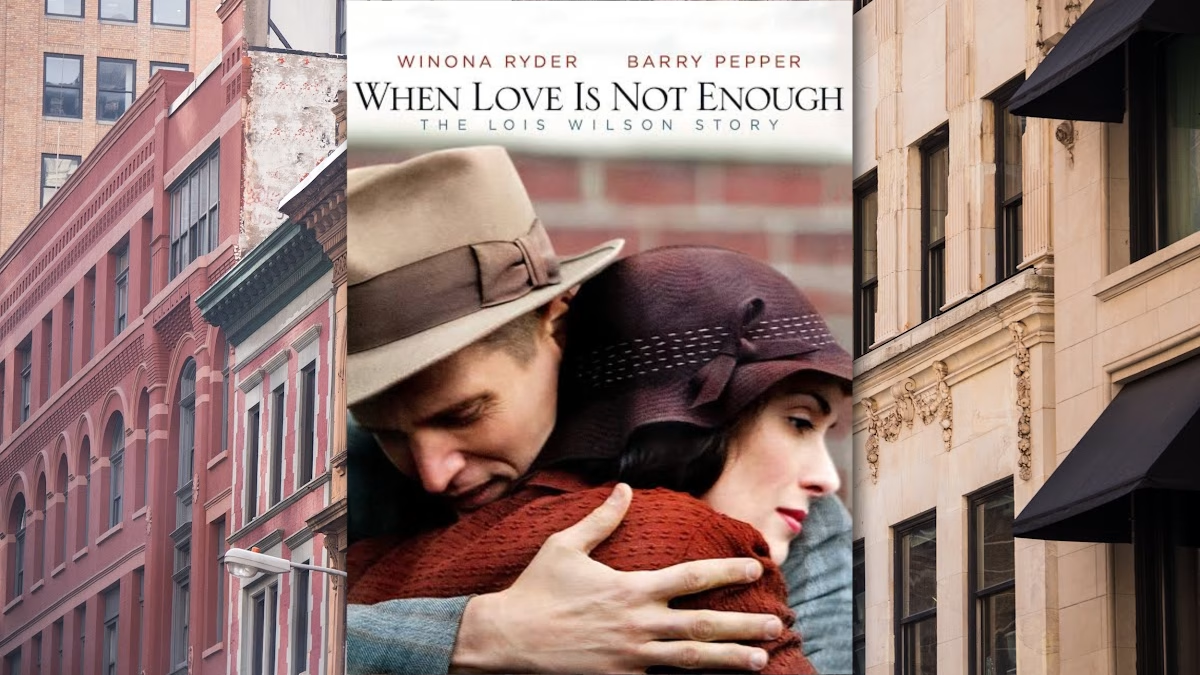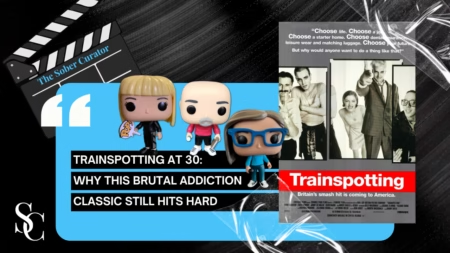
Let’s be honest: this one feels exactly like what it is—a Hallmark Hall of Fame movie. If you’re into the history of AA, curling up with a Hallmark binge and a cozy blanket, you’ll probably settle right in. But if you’re expecting Winona Ryder to deliver the raw intensity of Girl, Interrupted or the haunting vulnerability of Edward Scissorhands, pump the brakes. The Oscar-nominated Winona we know and love doesn’t exactly shine through here. For a 2010 release, I went in with higher expectations and left feeling… let’s just say, underwhelmed.
That said, as a 12-step gal myself, I’m always intrigued when Hollywood tries to capture the messy, complicated, and often misunderstood history of Alcoholics Anonymous. On that front, the film does give us some historically fascinating (and frustrating) glimpses into the life of Lois Wilson, co-founder of Al-Anon, and her husband Bill Wilson, co-founder of AA.
The Plot
Lois Burnham marries Bill Wilson, a charming dreamer whose biggest long-term relationship ends up being with booze. While Lois works tirelessly as a nurse and retail sales gal, propping up Bill’s ambitions, he spirals deeper into alcoholism. By the early 1930s, the Wilsons lose nearly everything—status, money, and eventually Lois’s family home—while Lois herself becomes increasingly isolated.
Fast forward: Bill finds sobriety not through Lois’s endless attempts to “love him sober” but through the support of Dr. Bob Smith, leading to the founding of AA in 1935. In fact, it is Lois who points out to Bill, after he has had many failed attempts at helping other men get sober, that by doing so, he has stayed sober himself. Without this prompt, there’s a good chance Bill would have never even met Dr. Bob. I see this as a foreshadowing that the right thing said at the right time can be all that is needed to experience a life-altering change, which in the Big Book of Alcoholics Anonymous, is referred to as a spiritual experience.
What Worked (and What Didn’t)
Winona-as-Lois has one standout moment worth mentioning. In a scene where Bill is scraping bottom yet again, Lois delivers the line: “You don’t even have the decency to die after you hit bottom.” OUCH. It’s sharp, bitter, and heartbreakingly real—probably the truest emotional punch in the whole film. I was also rather fond of the scene where she throws her shoe at him. Trust me, he deserves it. And that scene should serve as a reminder to those of us afflicted with this thing that we are ego maniacs and assholes, even when sober.
Another haunting image: Lois returns home one night to find cars lined up outside her Brooklyn brownstone, each one occupied by women waiting for their husbands to emerge from an AA meeting being held in her living room. The wives are left literally and figuratively sitting outside on the curb. As someone who knows AA’s history, I understood the context, but the visual really hammers home the inequity of it all.
Unfortunately, despite being her story, Lois is still overshadowed by Bill, AA, and—ironically—their shared drinking habit. (IMO) The ego takes center stage, as it often does. Even in a film about Lois, she still feels like a supporting character. And maybe that’s the point?
A Notable Omission: Marty Mann
What really made me groan was the glaring absence of Marty Mann. For those who don’t know, she was the first woman to achieve long-term sobriety in AA and a pioneering force in the movement. Marty wrote “Women Suffer Too” in the Big Book and launched the National Committee for Education on Alcoholism in 1944. She worked tirelessly to educate America that alcoholism was a disease, not a moral failing. Marty’s contributions are constantly overlooked, and this movie adds to that erasure. Be on the watch-out for a future article all about the fabulous Marty Mann, whom I like to think of as the first lady of AA. Her story is as fabulous as her advocacy was.
Movie Night Sobees Score: 2.5 out of 5

Final Pour
If you want a Hallmark take on recovery history, you’ll find some value in this one—especially in seeing the painful patience (and sacrifice) of Lois Wilson. But if you’re looking for depth, grit, or Winona Ryder at her finest, this isn’t it.

MOVIE NIGHT WITH THE SOBER CURATOR: is your go-to guide for films and documentaries that intricately weave addiction, recovery, and mental health into powerful storytelling. Think of us as your bee-zy movie critics, curating a hive of must-watch titles that inspire, educate, and spark conversation.
Our review archives are neatly organized into Drama, Dramedy, and Documentary categories, making it easy to find your next captivating watch. Whether you’re in the mood for a heartfelt indie, a laugh-through-the-tears comedy, or a thought-provoking doc, we’ve got you covered.

TSC LIBRARY: Welcome to The Sober Curator Library! We don’t just read books; we immerse ourselves in literary journeys, tune in on Audible, and craft insightful reviews. Our digital shelves are organized into four genres: #QUITLIT, Addiction Fiction, Self-Help, and NA Recipe Books.
You’ve got mail from The Sober Curator

Resources Are Available
If you or someone you know is experiencing difficulties surrounding alcoholism, addiction, or mental illness, please reach out and ask for help. People everywhere can and want to help; you just have to know where to look. And continue to look until you find what works for you. Click here for a list of regional and national resources.






